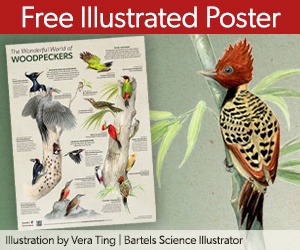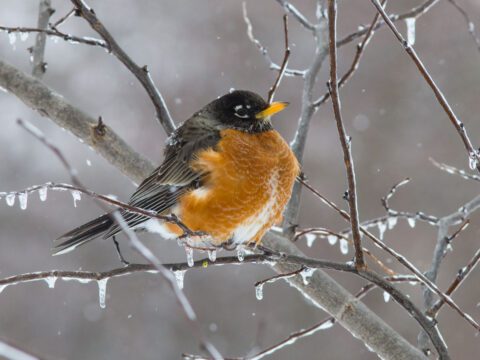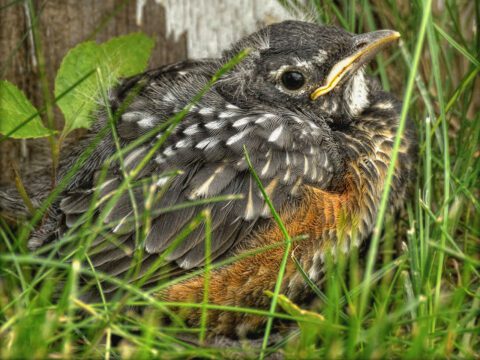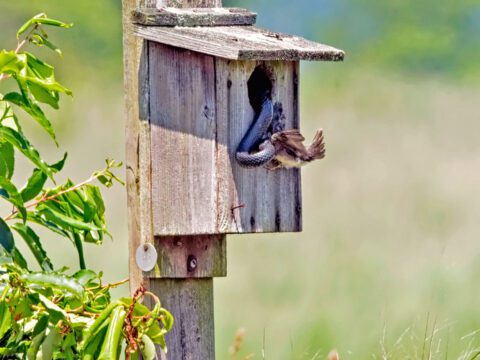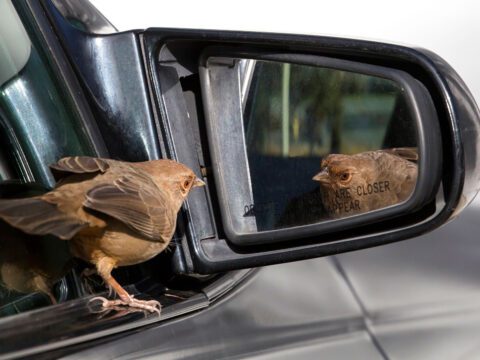New Book Tackles Old Question: Competition Between Bird Species
March 9, 2012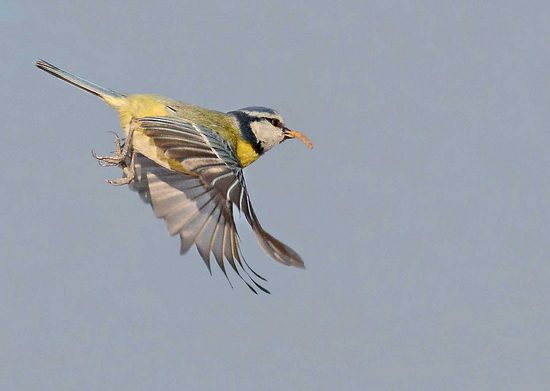
How much of the world we see around us is the result of competition between species? The answer is one of the enduring debates in the field of ecology. Evolution and natural selection are founded on the idea that individuals compete to get the resources they need to survive. It happens within species all the time, but whether competition happens between members of different species has been harder to ascertain.
The question is the subject of a new book, Interspecific Competition in Birds, published by Oxford University Press. The author, André Dhondt, is the Morgens Professor of Ornithology at the Cornell Lab. In a recent conversation, he described how the book developed from his early work on two common species of tits, small European songbirds that look like colorful chickadees.
Q. For a person watching birds squabbling at feeders, it seems like competition among species happens all the time. Can you explain why that might not be proof of competition?

A. There’s a fundamental difference between competition and aggression. For an interaction to be called competition, it must have adverse effects on survival and reproduction for the individuals involved. So in order to prove the existence of competition, detailed and extensive data on survival or reproduction are required.
Some people believe that competition is so important in nature that when it occurs it will be transient. Either one of the species will disappear or the two species will evolve rapidly such that they avoid competition. This was the paradigm actually for a very long time, saying that two species that compete cannot coexist. This led to “the paradox of competition”—the idea that competition is so important that it can only rarely be observed.
Q. So this idea held sway for many years, and then what happened? How did it lead you to write this book?
A. Well in 1977, by analyzing some data that we had in Belgium, I found evidence for competition between Great Tits and Blue Tits. When the density of one species was higher, the reproduction of the other species was less. The Blue Tits, being smaller, eat the younger instars of the caterpillars, so they eat the caterpillars before the Great Tits can start to eat them. The more Blue Tits there are, the less food there will remain for Great Tits.
At that time [this] was against the accepted idea, so much so that it got published in Nature. And actually this was the start of a large number of studies both in Europe and North America looking in more detail at the existence of competition, a lot of it experimental.
[In the 1990s] I was invited to give a plenary talk about my work on competition, and after the talk one of my friends and colleagues, John Krebs, who also studied Great Tits for a large part of his career, came to me and said, ‘Gee André, have you thought about writing a book about this?’ And the answer was no, I never thought about writing a book, period. But I said, you know if there were a book I would write, it would be about this subject.Q. So for many years people thought competition was rare among species, and then your work started people thinking it wasn’t so rare. Does the book take sides?
A. The real question in this book is, does competition exist? If so does it exist frequently or is it rare? Just because you can prove it exists in one system does not mean that it is generally important. Finding it does exist, then I ask the question, okay what’s the effect as a selective force on traits of species? I try really to find the examples in the world today that document rapid evolutionary changes caused by interspecific competition.
Q. And I take it there were plenty of examples, one even including humans?
A. It’s actually surprising, in the last 10 years, how many really good field experiments have been done. It’s hard to study a system in which you manipulate the intensity of competition over time and for long enough to cause evolutionary change. To some extent it’s the coming of age of field ecology, where the requirements for an experiment in the field are as rigorous as requirements for experiments in the lab.
I have a whole chapter, maybe 80 pages in the book, in which I summarize and discuss all the good field experiments [meaning they include replicates and controls] where people have tested for the existence of interspecific competition. That’s a list of about 100 experiments that I discuss.
One example is how we have outcompeted Neanderthal man. The thinking is that this was caused by global warming at that time, between the ice ages, and that modern man was able to use resources more effectively and thus outcompeted Neanderthal man. It was a fun paper to find.
Q. One reviewer has said of your book that you “seem to revel in the complexity of avian interspecific interactions.” Do you agree? Is a complicated answer more satisfying to you than a simple answer?
A. [Laughs.] Well, I like to understand things in detail. I like simple answers, but sometimes the answer can’t be simple. There are so many things interacting at the same time that if you limit yourself to a subset you might actually draw incorrect inferences. At some point you really have to go all the way and try to see what it’s like.
Q. Where does the field go from here? What’s the next question to answer?
A. What we need to do is to repeat some experiments but collect more detailed information. There’s a bunch of excellent work done in British Columbia [led by Kathy Martin at the University of British Columbia], who looked at the effects of competition in the whole cavity nesting community, which includes insects, mammals, and birds. But what she didn’t do was to follow the fate of individuals. So to understand really how the system works you would need to have like five times more people, so that you can [band] all the birds, so you can follow the fate of the individuals and their offspring. That would be I think the next breakthrough in this kind of research.

All About Birds
is a free resource
Available for everyone,
funded by donors like you
American Kestrel by Blair Dudeck / Macaulay Library
